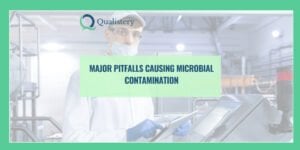The History of the ICH Q9 Article
The International Council for Harmonisation of Technical Requirements for Pharmaceuticals for Human Use (ICH), established in 1990, is a global entity that unites regulatory authorities from the United States, European Union, and Japan. This collaboration was initiated to harmonize the varying technical requirements for drug registration worldwide. The primary mission of the ICH is to develop a unified system of pharmaceutical requirements, ensuring the registration of safe, effective, and high-quality medicines globally in a resource-efficient manner.
Historically, the pharmaceutical industry has been guided by stringent rules set by regulatory agencies to define a quality product. This led to a one-size-fits-all approach to regulatory compliance, which proved challenging for pharmaceutical companies to implement. Recognizing this, the FDA, in the early 21st century, began advocating for a Quality Risk Management (QRM) approach. This innovative approach has since become a cornerstone of international guidelines, including those of the ICH.
Specifically, the ICH Q9 guideline was developed to assist pharmaceutical companies in implementing QRM in their manufacturing processes. The aim was to foster a more flexible approach to comply with regulatory guidelines while simultaneously promoting continual improvement.
Considering that the use of any pharmaceutical product carries some level of risk, the goal of QRM is to minimize this risk to safeguard the patients from harm. While it is impossible to eliminate patient risk, the aim is to ensure that any associated risk is well-managed and justified by the potential benefits.
From the manufacturer’s perspective, implementing QRM offers numerous advantages. It aids manufacturers in achieving enhanced process control and knowledge, reducing delays in process improvement, quickly identifying and evaluating potential quality defects, and decreasing the number of product recalls. Furthermore, manufacturers can allocate resources more effectively by identifying the riskiest and most critical operations. A well-executed QRM system also showcases a company’s commitment to achieving greater transparency and predictability.
The main principles of QRM
Quality Risk Management (QRM) encompasses a systematic approach that operates on two fundamental principles:
1. “The evaluation of the risk to quality should be based on scientific knowledge and ultimately link to the protection of the patient. (Note: Risk to quality includes situations where product availability may be impacted, leading to potential patient harm.).” – ICH Q9
2. “The level of effort, formality and documentation of the quality risk management process should be commensurate with the level of risk.” – ICH Q9.
Quality Risk Management process
The Quality Risk Management (QRM) process consists of identifying, assessing, controlling, communicating, and reviewing risks that may impact the quality of a pharmaceutical product.
This process is visually represented in a comprehensive diagram (see Figure 1), which serves as a roadmap for navigating the various stages of QRM. The diagram provides a clear picture of how each step feeds into the next, creating a continuous cycle of risk management that is integral to maintaining product quality and ensuring patient safety.

Figure 1. Overview of the Quality Risk Management process. Source: ICH Q9 article.
With this understanding of the overall QRM process, let’s delve into each step in more detail to understand better how they contribute to the whole system.
Risk Assessment
The ultimate objective of risk assessment is to distinguish between acceptable and unacceptable risks in a consistent and reproducible manner. This process is typically divided into three critical steps:
- Hazard identification: Systematic process that leverages available information to identify potential hazards.
- Risk analysis: This step involves estimating the risk associated with a particular hazard. It requires the integration of several factors, including the severity of the hazard, its likelihood of occurrence, and the detectability of the harm it could cause.
- Risk evaluation: This process involves comparing the identified and analyzed risk against predetermined risk criteria to determine its acceptability.
It’s crucial to ensure the robustness of the data used in this process and to clearly articulate the underlying assumptions and sources of uncertainty, such as incomplete knowledge and unexpected variability. The outcome of a risk assessment may be a numerical risk score or a qualitative descriptor, such as “high,” “medium,” or “low,” providing a clear indication of the level of risk involved.
Risk control is a crucial decision-making process to reduce unacceptable risks and accept risks when appropriate. The effort exerted in risk control must align with the severity of the risk. Strategies for risk reduction can involve mitigating the severity and likelihood of occurrence and enhancing the detectability of risks.
QRM Process and Risk Review
The QRM process is iterative, requiring the implementation of a systematic methodology for reviewing results. This process is dynamic, meaning the methodology should continue to be applied even when new information could impact the original decision. The level of risk determines the frequency of monitoring.
Risk Communication
Risk communication involves formally disseminating information about potential risks associated with a specific process. Proper communication and documentation of the quality risk management process are crucial and can occur at any stage. This aspect of QRM is particularly significant for key decision-makers within organizations and regulatory bodies. Fluid communication between the organisation and regulators regarding quality risk management decisions is strongly encouraged. The most pertinent QRM results to be communicated include the likelihood, severity, acceptability, control, and detectability of risks.
Essential Tools for Quality Risk Management
While using QRM, several risk management tools are utilized to ensure the quality of pharmaceutical products. According to the ICH Q9(R1) guideline, these tools are designed to structure risk management by organizing data and facilitating decision-making.
Some basic risk management facilitation methods include Flowcharts, Check Sheets, Process Mapping, and Cause and Effect Diagrams (also known as Ishikawa or fishbone diagrams). In addition to these, more advanced tools are currently gaining momentum.
One of them is the Failure Mode Effects Analysis (FMEA). This tool provides a systematic way of identifying potential failures in processes and quantifying their effects. It typically uses a matrix analysis that combines information on three variables: Severity of the failure mode (1-10), likelihood of occurrence (1-10), and difficulty of detection (1-10). By multiplying these variables, a Risk Priority Number (RPN) is obtained, which can be used to rank failure modes according to their level of risk. The higher the RPN score, the greater the risk associated with that particular failure mode.
It’s important to note that FMEA is just one of the many tools available for Quality Risk Management. The pharmaceutical industry is rich with a variety of other advanced tools and methodologies, each designed to address specific aspects of quality and risk.
Changes on the revised version of ICH Q9
The revised version of the ICH Q9, known as ICH Q9(R1), has made significant progress in addressing the issues of subjectivity, lack of understanding of formality in Quality Risk Management (QRM), and lack of clarity on risk-based decision-making.
The ICH Q9(R1) clearly remarks subjectivity as one of the main problems of QRM. Subjectivity can be mostly introduced in the following steps: estimating the probability of occurrence/severity and evaluating the impact of the risk reduction strategies. To address this issue, the ICH Q9(R1) highlights the necessity of recognizing individual biases among stakeholders and systematically challenging each used assumption during the analysis. It also advocates for the application of knowledge management to increase objectivity. Knowledge management is a systematic approach to acquiring, analysing, storing, and disseminating information related to products, manufacturing processes, and components. By creating a shared body of relevant data and understanding, knowledge management helps to minimize individual biases and promotes a more objective perspective in the Quality Risk Management process.
The new guideline also provides a clearer understanding of what formality is in QRM. It explains that formality in QRM is not a binary concept, and varying degrees of formality may be applied during quality risk management activities, including when making risk-based decisions. It provides characteristics of higher and lower levels of formality and notes that degrees of formality between these levels also exist and may be used. This provides a more nuanced understanding of formality in QRM and allows for a more tailored approach to risk management.
Lastly, the ICH Q9(R1) has improved clarity on risk-based decision-making. It explains that risk-based decision-making is inherent in all quality risk management activities and provides an essential foundation for organisational decision-makers. The guideline guides approaches to risk-based decision-making, which are directly related to the level of formality applied during the quality risk management process. It also emphasizes the importance of ensuring the integrity of the data used for risk-based decision-making.
Final words
In conclusion, the progression of Quality Risk Management (QRM) in the pharmaceutical industry has been marked by continuous evolution and refinement. The ICH has played a fundamental role in this process by providing a comprehensive framework for QRM through guidelines such as the ICH Q9.
As we look towards the future, the development and refinement of QRM guidelines and tools will continue to play a crucial role in maintaining the quality of pharmaceutical products and ensuring patient safety.
Join us on July 18th for an exclusive webinar where we’ll explore several situations where QRM can be used prospectively and retrospectively.

With a dedication to serving the pharmaceutical industry, Qualistery specializes in hosting informational webinars that support both professionals within the pharma sector and service providers. Our commitment lies in empowering businesses to maximize their impact through engaging virtual events and strategic webinar solutions. Additionally, Qualistery supports life science companies through private GxP training and compliance services.








